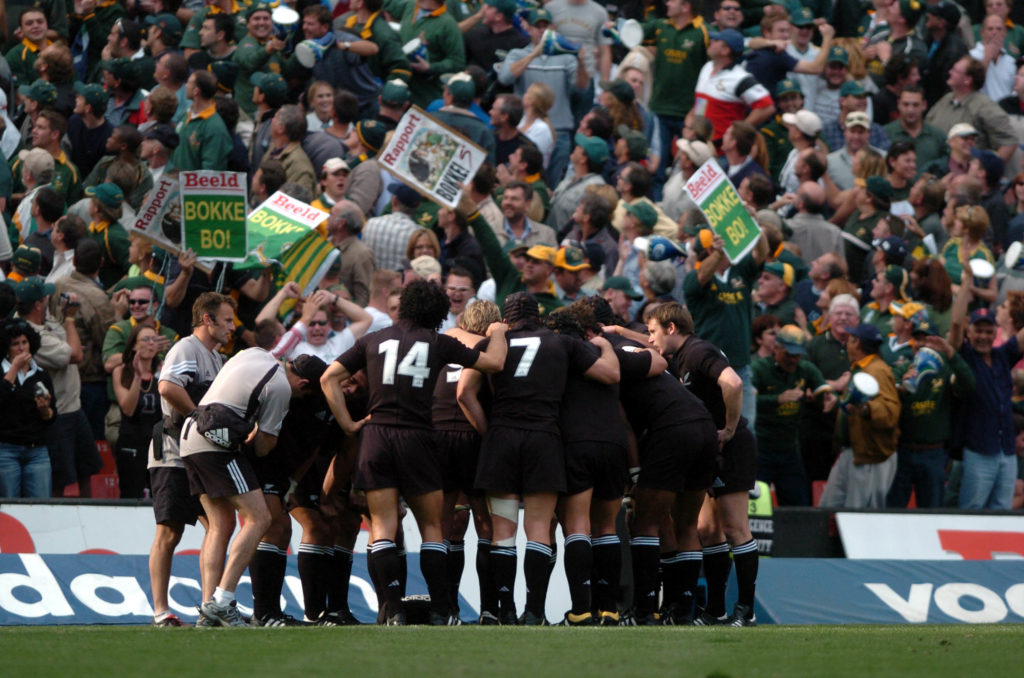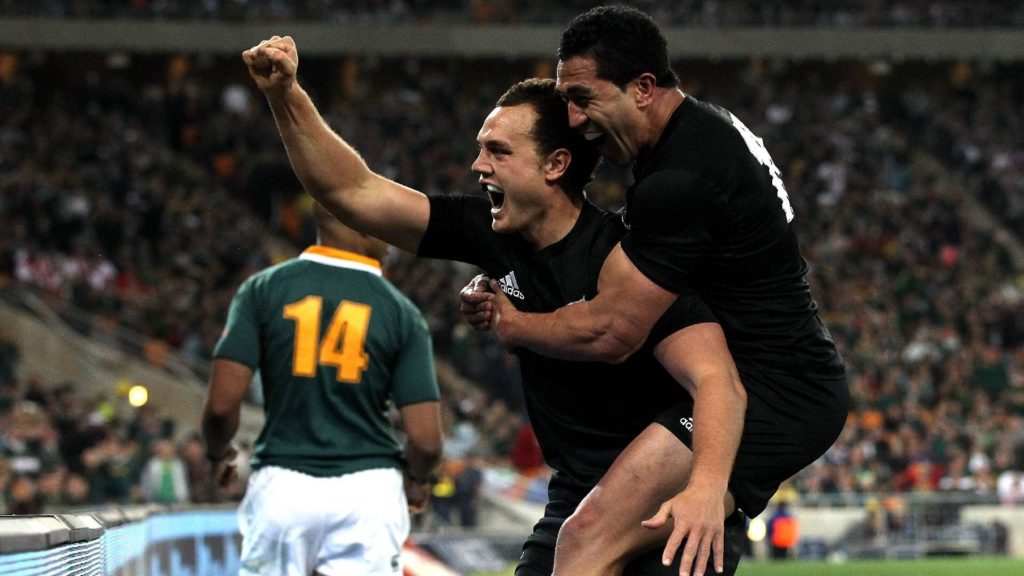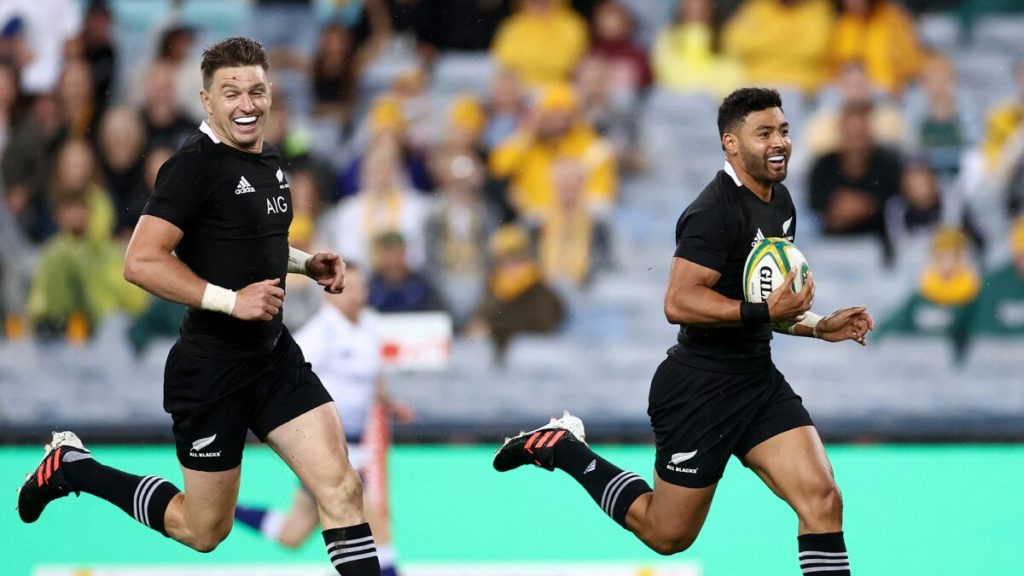That the All Blacks had something of an epiphany after their heavy loss to South Africa in 2004 is a well-known story.
Mostly anyone with even a passing interest in rugby would be aware that after losing 40-29 at Ellis Park in October that year, the All Blacks indulged in an epic drinking session that saw half their squad carried to bed before 9pm. The other half were mostly left in the recovery position, where they had collapsed in the grounds of the five-star retreat in which they were staying.
It was a shocking sight to see the world’s best team having drunk themselves into such a pitiful state that assistant coach Wayne Smith, who had been persuaded to give up his coaching gig at Northampton earlier that year to join Graham Henry’s coaching team, said that if things didn’t change, he wanted to play no further role with the All Blacks.
Kicking out some of the worst aspects of alcohol abuse was obviously a big positive for the All Blacks, but the media missed what had really happened and what was most important.
Henry, the former head coach of Wales and British and Irish Lions, agreed that the mind-set towards booze was appalling and when the team returned home to New Zealand, he and his fellow management team set about revolutionising the culture of the team.
The media headlines were dominated in the weeks that followed by the move to stamp out institutionalised drinking and ban old practices such as court sessions and the like where alcohol could be used to humiliate people.
Kicking out some of the worst aspects of alcohol abuse was obviously a big positive for the All Blacks, but the media missed what had really happened and what was most important.
The biggest shift the All Blacks made in 2004 was persuading individuals to think about the team first, and their contracts second. Watching the team succumb to the Boks at Ellis Park, Sir Brian Lochore in his capacity as an independent selector, noted that under pressure, players made decisions that were good for them and not for the team.

The only man he felt was staying in tune with the greater needs of the collective was captain Tana Umaga. It was Lochore’s view – and he was a brilliant thinker and inspirational leader – that the All Blacks would be destined to never truly fulfil their potential if players couldn’t sacrifice themselves for the greater good.
He knew, through his long association with the team as a former captain and coach, that the All Blacks way was to not share ideas with a positional rival and protect intellectual property at all costs. It wasn’t uncommon for two men competing for the same jersey to have the occasional fist fight at training.
Rarely, if ever, would two positional rivals be friendly off the field and they typically just ignored each other, certainly never going out of their way to help one another.
That, according to Lochore and endorsed by Henry and his coaching team, needed to change. And that’s what the big shift in thinking was really about in 2004. The All Blacks came to see that the team always had to come first. That however much an individual may want to protect what they knew to help them retain their position, it ultimately was debilitating for the team to not share.
If there was a moment which epitomised or confirmed how successful the All Blacks had been in embracing this new competitive but collaborative culture, it came in 2009 when the team were playing Italy in Milan.
They sensed a brotherhood within the All Blacks that they didn’t have, but wanted. They were amazed at how much time the players spent together and how easily and readily they worked with one another at training, sharing ideas and gifting intelligence to try to make everyone better.
Their jersey sponsor, Adidas, also had a partnership with football giants AC Milan and players from both teams met for dinner. The round ball men were blown away with what they saw.
They sensed a brotherhood within the All Blacks that they didn’t have, but wanted. They were amazed at how much time the players spent together and how easily and readily they worked with one another at training, sharing ideas and gifting intelligence to try to make everyone better.
This fraternal world was unlike anything the AC Milan crew had experienced – but they loved it. And importantly, their awe was something the All Blacks picked up on.
Seeing themselves reflected by the AC Milan players helped them realise how far they had come and how powerful their new culture was and almost certainly they never would have won the World Cup in 2011 had they not made that change in 2004.

In the two years before the tournament, veteran fullback Mils Muliaina would phone the younger Isaia Toeava once a week. The two would chat, critique each other’s respective Super Rugby performances over the weekend, offer some tips and share advice.
The amazing thing being that they were both hoping to play fullback for the All Blacks. As the senior man, Muliaina was brave enough and big enough to mentor Toeava and accepted that one day, the younger man would go past him and become a better player.
That was the point, said Muliaina – the team needed the best player in the jersey and so be it if it wasn’t him. And as it turned out, by mid-2011 it wasn’t him, as another youngster, Israel Dagg, emerged hard and fast to claim the No 15 spot by the time the tournament kicked off.
It was a tough blow for Muliaina to have been the preferred fullback since 2003 only to lose his spot in the last three months of his test career.
But he, by all accounts, was brilliant at the World Cup in the way he led the other outside backs: advising them, helping them and sharing all his experience even though it crushed his own dreams to not be starting regularly.
Such battles for positions are commonplace in the All Blacks, but this year there will be one with a particularly intense focus because it will involve arguably the two best No 10s in the world.
That selflessness of Muliaina had a profound impact on Dagg, who found himself in a similar position at the next World Cup when he was cut from the squad on the eve of the tournament.
When he fought his way back in 2016, he ended up ousting Julian Savea from the wing in the June series against Wales. When he was asked about how Savea, with whom he was sharing a room that week, was feeling about that, Dagg said: “There’s a rule in this team – you can sulk for a minute and then you’ve got to get over it and move on and do what’s best for the team.
“I’ve been in the same shoes, rooming with guys who have got opportunities and I’ve not played. You’ve just got to … help them prepare. Jules has been doing that this week. Deep down he will be hurting. I’ve felt it and it’s not a nice thing, but it makes you stronger. I’m sure he’ll come back and bowl people over.”
Such battles for positions are commonplace in the All Blacks, but this year there will be one with a particularly intense focus because it will involve arguably the two best No 10s in the world.
Richie Mo’unga and Beauden Barrett are going to scrap it out for supremacy, after the latter made it clear that he no longer wants to be considered a fullback.
At some stage in the year, All Blacks coach Ian Foster is going to have to settle on a preference and commit to starting one ahead of the other and that will test the relationship between Barrett and Mo’unga which has to date, been convivial, open, collaborative and transparent.

Mo’unga, when asked six days before the All Blacks first test of 2021, about how he sees things playing out this year between him and Barrett, was unequivocal that nothing would change.
“We’re open about it,” Mo’unga said. “We address the elephant in the room, but we’re not bigger than the team.
“It’s far greater than the individual and for us it’s about whatever is best for the team. For me, if he’s wearing the 10 jersey this week, it’s about how can I best prepare him? How can I best prepare the team to go out there and perform? It’s putting your ego on the hook. I’d love to wear the 10 jersey but, if not, what does the best teammate look like going forward?
“It’s a healthy relationship, and I’m sure he feels the same way about me as well. But 10 is such a crucial position; it’s the driver of the team, it’s the position where you’ve got to take the lead. We both have different ways of doing that but I’m sure whoever gets to don that 10 jersey will do a great job.”
And with that, Mo’unga had made the most powerful statement about how transformational the cultural revolution of 2004 has been. He talked freely about his respect and admiration for Barrett – citing him as a mentor, a role model and a source of inspiration.
It puts a lot of pressure on me because we know what he is capable of, the man he is, the influence he has, and if I’m wearing the 10 jersey I don’t want to let him down – as well as the country.
Richie Mo’unga on the pressure of competing with Beauden Barrett
The two are close, friendly even, and determined to get the best out of each other. Barrett has the greater body of test experience and arguably has more to impart and he obviously does so freely and generously.
“There’s a lot of competition out there in different positions, and I think it’s really healthy for the team,” Mo’unga said.
“It’s healthy for us because it’s a big challenge to know that I’ve got someone like Baz [Barrett] wanting the same jersey as me, it’s motivating, it’s inspiring; it’s not an unhealthy challenge, I must say. It’s one that’s going to be better for the team. Whoever dons the jersey, I’ll be happy for him and he’ll be happy for me.
“It puts a lot of pressure on me because we know what he is capable of, the man he is, the influence he has, and if I’m wearing the 10 jersey I don’t want to let him down – as well as the country.”
These two are rivals second, team-mates first and the All Blacks coaching staff should be optimistic that they will help each other to reach new heights this year and beyond.



Comments
Join free and tell us what you really think!
Sign up for free